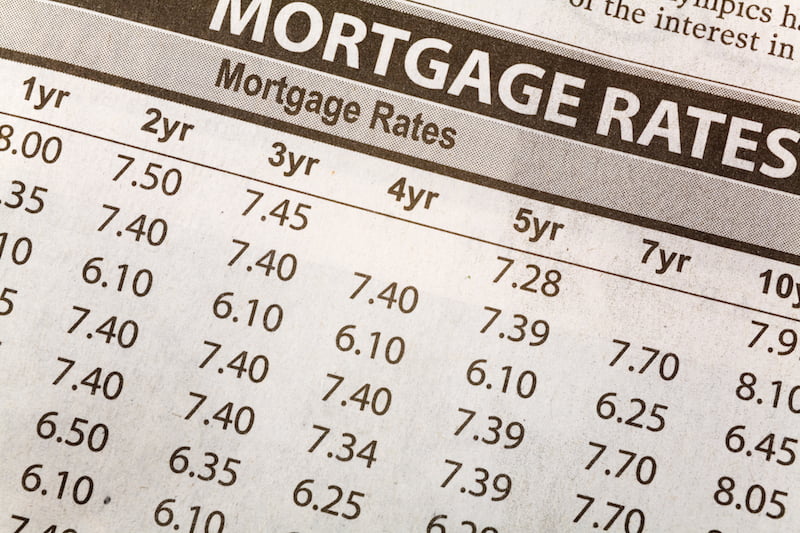Fixed Vs. Variable Rate

What’s better, a fixed rate or a variable/adjustable rate?
Before I answer this question, you must understand the difference between a fixed-rate mortgage, adjustable-rate, and a variable rate mortgage.
An educational moment is coming up.
Fixed-rate mortgage: – A fixed-rate mortgage offers a specific interest rate that is fixed or “locked-in” for the term of the mortgage. The amount of your regular mortgage payments is consistent, as is the portion of your payment that goes toward principal and interest. The majority of Canadians typically use a five year fixed term.
Pro: you have the comfort of knowing that the payment never changes.
Con – depending on your goals, you may be paying too much in interest? Especially in the first two years.
Adjustable-rate mortgage: An “Adjustable Rate Mortgage” or ARM refers to the type of mortgage where the interest rate and mortgage payments will rise and fall with the prime lending rate. The lender’s prime rate typically follows the Bank of Canada. I say, typically because when the Bank of Canada rate is reduced by the Governor of the Bank of Canada, lenders do not always follow suit.
Variable-rate Mortgage: A variable rate mortgage will fluctuate with the Prime rate throughout the mortgage term. While your regular payment will remain constant, your interest rate may change based on market conditions. And the fluctuation will impact the amount of principal reduction you receive each month. When rates are low, more of your payment will be directed towards the principal, and when the interest rates are higher, a larger percentage of your monthly mortgage payment will go towards the interest portion of your loan.
As long as the interest portion stays below your required payment, your payment will not vary. If rates rise and the interest portion increases above your natural payment, your mortgage payment will increase.
Which one is better for you?
I’m shrugging my shoulders. Only you can make this decision.
Here’s a quick test:
Do you lose sleep when it comes to money?
If your payment was to change, would it cause anxiety?
Are your overall finances a source of stress or concern?
Then an adjustable rate or a variable rate mortgage might now be right for you?
We can discuss options; there’s no one size fits all.
Oh, did you know that an increase/decrease of 0.25% is equal to $12.10 on $100,000.00? Yep, that means if you have a $300,000.00 mortgage and Prime went up by 0.25%, your monthly mortgage payment will increase by $36.00. My job is to take the fear away and bring understanding. When we have a better understanding, we make informed decisions.
Would you like to go deeper?
A study by Moshe Arye Milevsky tracking interest rates from 1950 – 2000 revealed that consumers were better off, on average, financing a mortgage with a variable rate compared to a long term fixed-rate mortgage. A consumer with a $100,000 mortgage and an average amortization period of 15 years would pay $22,000 more in interest renewing with a five-year rate instead of using an adjustable-rate mortgage.
Thoughts:
You cannot lock into the adjustable rate. That’s the difference between a fixed-rate and an adjustable-rate. The rate stays the same – for better or for worse. And adjustable-rates changes – for better or for worse. You can rollover to a fixed rate and lock-in to whatever the fixed rate is at the time.
Having an adjustable-rate means, you receive the good times AND the not so good times. When Prime or the Bank of Canada rate goes up, so will your mortgage rate and payment. When the Prime or the Bank of Canada rate decreases, you *MAY* see your rate and mortgage payment go down the month following the decrease, provided the lender that your mortgage is placed with also lowers their Prime lending rate.
You’ll notice that there’s an *asterisk* there. Just because the Bank of Canada lowers, the rate does not mean the lender will follow. For example, The Bank of Canada Rate is currently .25%, and yet the bank Prime rate is 2.45%; what’s up with that?
The math 0.25% BoC rate + 2% Lender increase = 2.25% Which means that Prime should be 2.25% logically, right? WRONG. The lenders did not trickle down those deceases to the consumer.
The Bank of Canada lends the money out to the banks. It is called the overnight lending rate. Then the lender (one of the Big six banks) adds 2% to the Bank of Canada rate, which becomes the Prime lending rate. The Prime Rate is the rate that the banks use to lend to consumers. Be mindful; two of the green colour lenders have their Prime rate higher than the other lenders.
The Bank of Canada announces changes to the Overnight lending rate eight predetermined and fixed dates a year.
Yes, the BoC could increase or decrease the rates as they see practical and helpful to the economy. I do not see the Finance Minister or the Governor of the Bank of Canada increase rates with the same vigour as they did in the 1980s. It would be political and economic suicide.
Because nothing is straightforward, of course, all rates will depend on the mortgage you are considering. Are you buying, refinancing, or transferring a mortgage? The rates for a CMHC insured mortgage are not the same for some refinancing their home to release equity for a renovation. Having an experienced broker on your side is essential to getting you to your goals.
If you would like to discuss what type of mortgage will help you with your financial, budgetary, and housing goals, call me. I am here to help.
